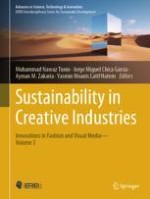2024 | OriginalPaper | Buchkapitel
Utilizing Leather Waste into Sustainable Leather Goods: A Study in Fashion Accessories Enterprise, PT. KMBS
verfasst von : Yoanita Kartika Sari Tahalele
Erschienen in: Sustainability in Creative Industries
Verlag: Springer Nature Switzerland
Aktivieren Sie unsere intelligente Suche, um passende Fachinhalte oder Patente zu finden.
Wählen Sie Textabschnitte aus um mit Künstlicher Intelligenz passenden Patente zu finden. powered by
Markieren Sie Textabschnitte, um KI-gestützt weitere passende Inhalte zu finden. powered by
